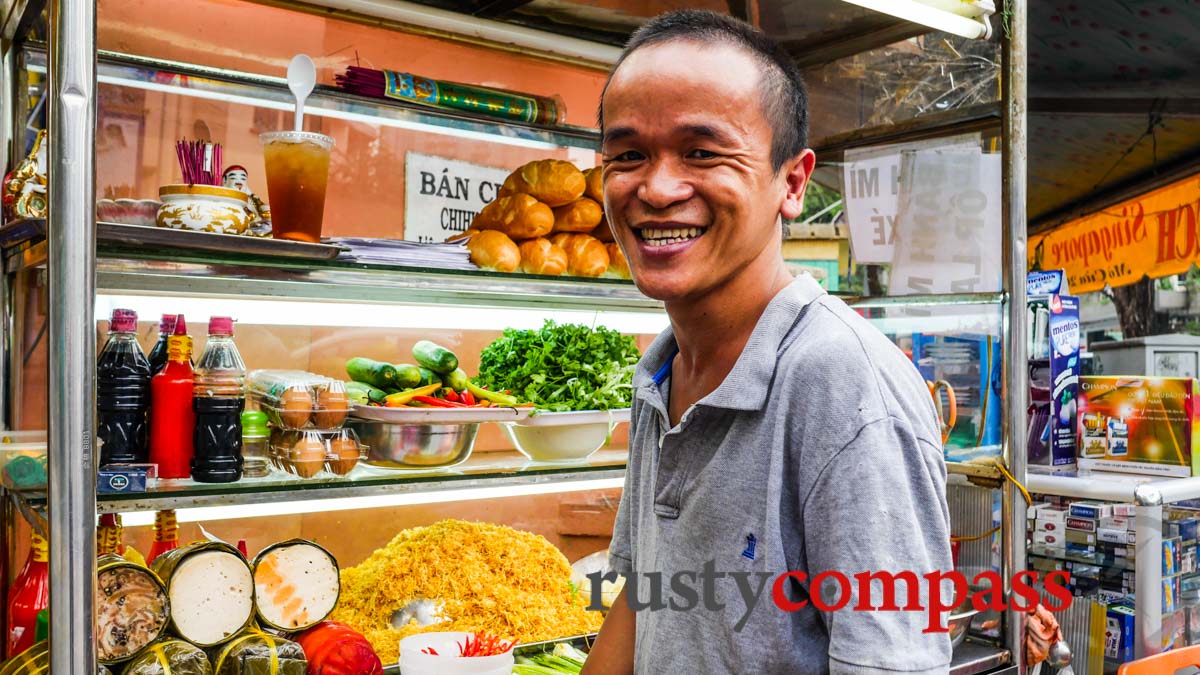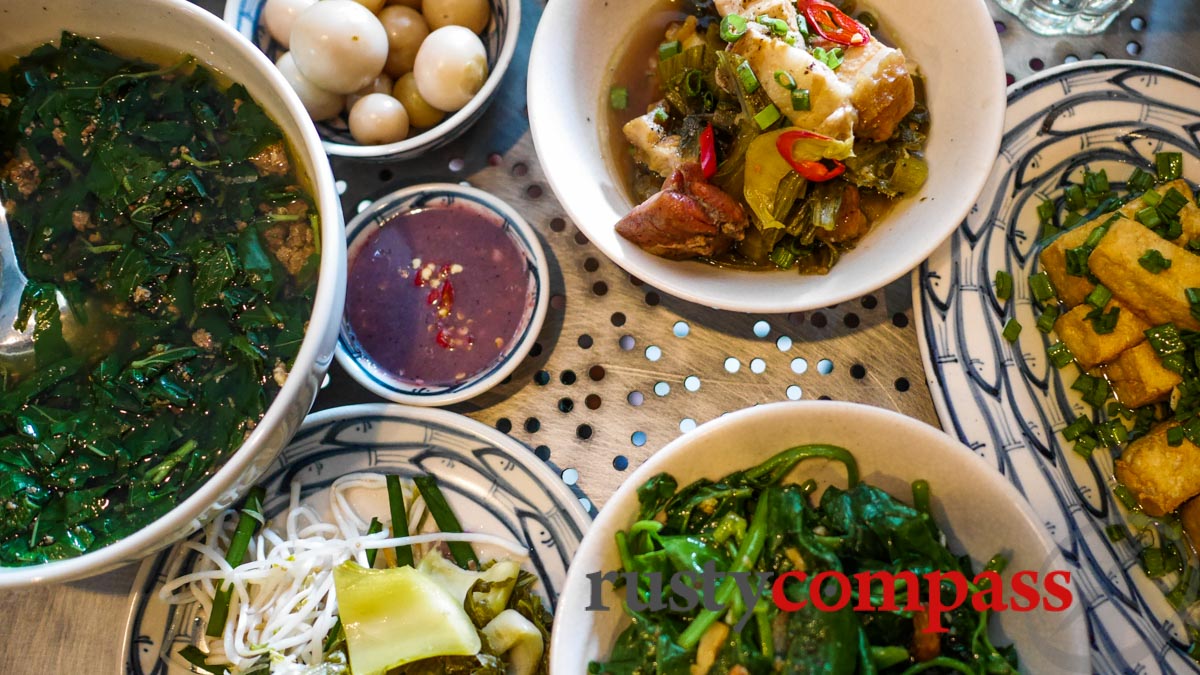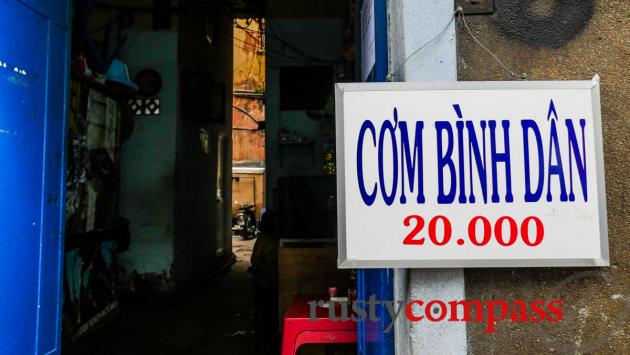On Saturday, I pulled into a little Irish bar in the heart of one of Saigon's tourist areas, for a quick meal. I ordered a 250gram Australian steak - which was, as you'd expect, one of the more expensive items on the menu.
Even so, I was a little taken aback with the price of 470,000VND (around $22US or $32AU). For convenience, I decided to press on. Then I discovered that the price only included the steak. So I added fries ($3.50US), vegetables ($3.50US) and sauce ($2.00US). It all added up to $31US (around $45AU) for a pub-style steak.
There was nothing flash about the sit-at-the-bar venue nor the meal.
With import and transportation costs, eating an Australian steak in Saigon is probably a bad idea - especially if you're on a budget. And there are better deals around town than this. The reason it’s worth mentioning is that only a few years ago, that same Australian steak was only $10 - $15US.
I’ve just spent the last few months revisiting Vietnam’s major tourist destinations - Hanoi, Hoi An and Ho Chi Minh City, checking out restaurants from street eats to fine dining. Street eats are still very cheap. But step off the street and into a place with some air-conditioning and some ambience and you'll enter a very different pricing regime.
In Hanoi I paid $50USD per person for two courses (food only) at a popular French restaurant, $40USD per person (food only) for a Vietnamese street food buffet lunch at an international hotel, and $60USD per person for two courses and sides at a social enterprise restaurant - there were no Aussie steaks involved.
None of these are exceptional restaurants, but their pricing might imply otherwise.
These examples are at the upper extreme - but prices are rising across the board.
What’s happening?
First the good news. If you seek it out, eating in Vietnam still offers great value for money. If you stick to plastic stools and simple local style eateries (many of which serve excellent food), there’s still great, delicious value to be had. Old favourites like pho, bun cha, banh mi and bun thit nuong can be had on the street for less than $2US.
A solid Vietnamese family-style meal in a simple local restaurant can be had for less than $5US.
Even these local places have seen some big price hikes. But they were so cheap to begin with that their prices still look good.

Photo: Mark Bowyer Banh mi stand. Eat local and save.

Photo: Mark Bowyer Eat local and save.
Prices in the provinces are also well below the major cities.
Hotels and bars are also mostly still good value for money.
But many visitors to Vietnam aren't comfortable with street food. And for them, the bill for a meal in Saigon and Hanoi is starting to look pretty similar to the one from home.
The biggest thing impacting prices has little do with Vietnam and everything to do with the collapsing currencies of Australia, Europe, the UK, Canada and NZ, against the US dollar.
The Vietnam dong fairly faithfully tracks the US dollar (it’s devalued slightly recently). So even if local prices don’t shift, travellers from most western countries (except Americans of course) will pay between 20% and 35% more for the same thing, than they would have 18 months to 2 years ago.

Photo: Mark Bowyer Your night out might cost the barman's monthly salary.
But local prices aren’t staying still. They’re rising (forget the inflation figures).
The kinds of moderately fancy Vietnamese restaurants listed on Rusty Compass, where you’re likely to head for a casual meal, will cost around 300K VND per person (around 14USD per person) minus drinks. That’s still a lot cheaper than you’ll pay for good Vietnamese food in most western countries. But given these prices are up between 50% and 100% over the past few years, you’d have to wonder when the price hikes will end? And what’s driving them?
Dining in western restaurants is where you’ll notice the big change - and it's most dramatic at the top end. You'd expect international cuisine to be more expensive. But it's become significantly more expensive in recent years.
Even more relaxed western eateries serving burgers, pasta, pizza and other western favourites, now have pricing that is nudging precariously close to restaurant prices in the West.
Locals will tell you that food inflation isn’t confined to the tourism economy and imports. Local food in local markets is getting expensive too.
And locals are changing their eating habits. A new class of affluent Vietnamese is taking street food indoors and they're also taking to fancy international restaurants. Steak is especially popular.
The usual major driver of restaurant pricing, staff salaries, seems not to be a major contributor to rising prices in Vietnam. Given how low Vietnamese salaries are, that’s a shame.
If the price rises equated with rising living standards of working people, they’d be a lot easier to stomach.
But the salaries of the staff serving you as you travel in Vietnam are still very low. So while that coffee or sandwich in a fancy setting may cost you the same as it would cost in London or Sydney, the servers are likely to be earning between $200 and $300USD per month in Saigon or Hanoi and less in the provinces.
Their counterparts in London or Sydney are earning more than ten times as much.
If you break down the components of your meal into food, wages, rent and profit - something you could do anywhere - there’s every chance that the latter two variables are the main drivers of rising prices in Vietnam - even if food prices are also on the rise.
And the restaurant scene is very competitive so it's unlikely that there's a whole lot of price gouging going on.
Most owners insist that landlords are taking a disproportionate slice of the pie.
It would be fine if Vietnam’s prices were on a par with developed countries (like neighbours Singapore, South Korea or European countries) because the country’s economic development had deliverered similar living standards.
But if prices in Vietnam start to look like those in high wage countries, when GDP and wages are still at such low levels, you have to wonder how inevitable future wage growth might impact on restaurant pricing and Vietnam's long held position as one of Asia's best value for money travel destinations?





There are no comments yet.